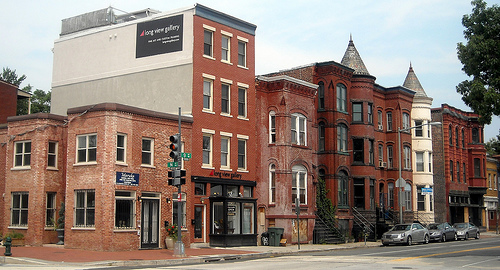Gentrifying a Small Town like D.C.
One of you pointed me towards an interesting post on BaancBlog: Blagden Alley and Naylor Court Jesting. In it, blogger Alley Denizen discusses the controversial piece Megan McArdle wrote for The Atlantic last month (“The Gentrifier’s Lament“):
What bothered me was the “here’s how gentrification works” attitude of it when I had the feeling that the author hadn’t been to many community meetings in DC and hadn’t spent that much time here. It seemed rather an attempt to put an abstraction of the New York model, with reference to the West Village onto DC. It didn’t seem DC concrete.
DC isn’t New York for various reasons, which is obvious. One of them is that DC is in many ways a small town.
It is a collection of 40 or so neighborhoods. Most of those neighborhoods have a low density component, so you can know a lot of your neighbors. The New York (or big city) model seems like pounding a square peg into a round hole.
One of the matters I rarely see discussed in gentrification discussions is the cohesion of many of the communities which comes from going to the same church for a couple of generations, knowing your friends parents, going to the same schools. In short, a small town. The complaints about gentrification are often really complaints about the loss of this cohesion in a neighborhood. Whether it’s from outsiders coming in or insiders going out to the bigger world is an open question.
-
Jdc
-
Anonymous





